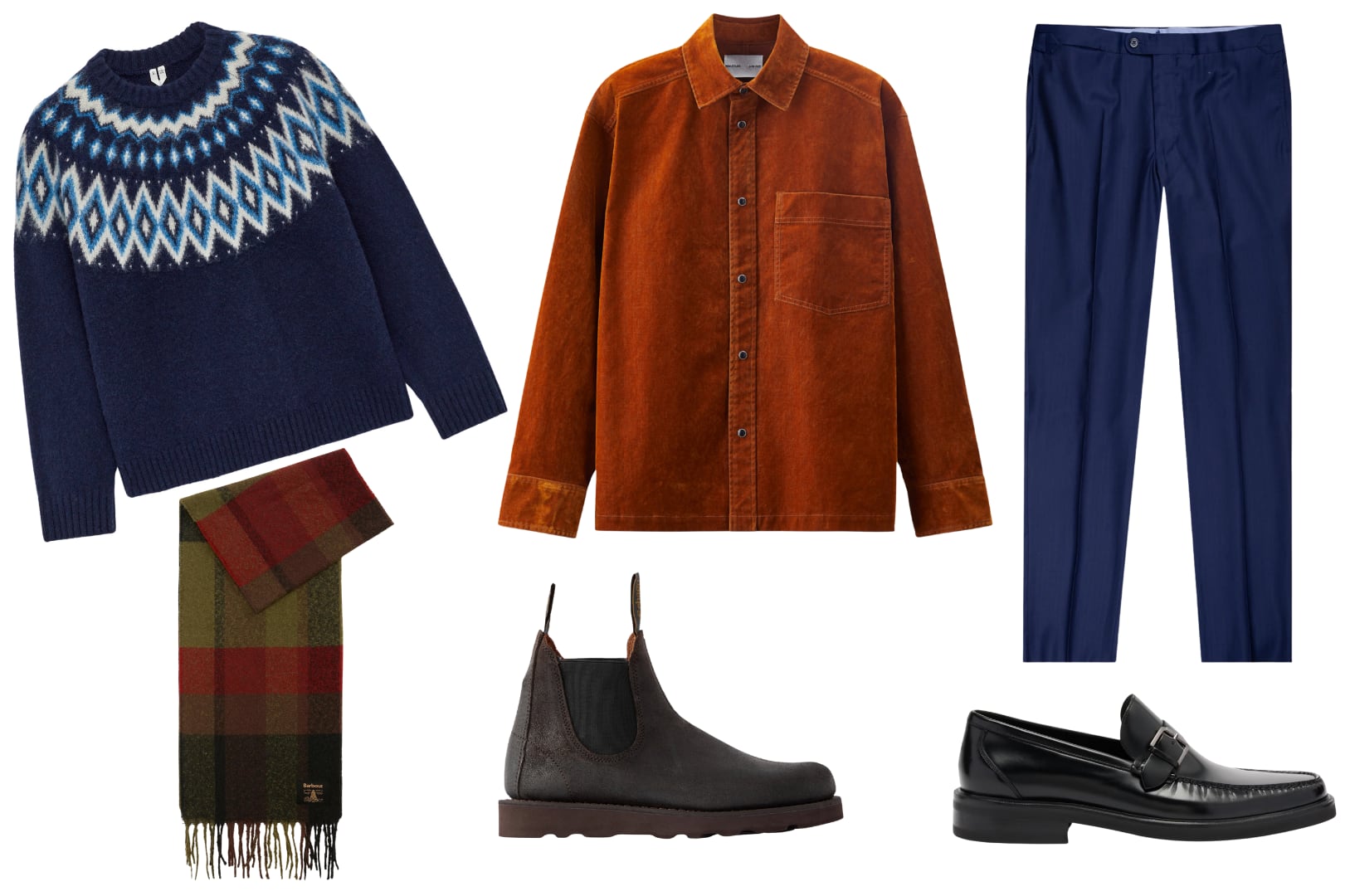Visionary Dutch fashion designer Iris Van Herpen, who is coming to Ireland next month, has been described as an artist who happens to work in fashion rather than a fashion designer who happens to be an artist. In her pioneering work she fuses traditional techniques with new technologies to remarkable effect, drawing inspiration from art, architecture and science in ways no fashion designer has done before.
Everything she makes is done by hand and a description of even one of her elaborate creations gives some idea of its concept and composition. Take her High Voltage dress, for example. It was constructed from thousands of transparent laser cut acrylic glass chevrons connected by hand through flexible silicone tubes into a three dimension electrically discharged silhouette.
The effect of the dress on the catwalk was sensational. Her many fans include singers and actors attracted by her show-stopping looks – Lady Gaga, Bjork, Solange, Cate Blanchett, Rihanna, Katy Perry and Gigi Hadid to name but a few. Her shimmering crystal Heliosphere gown was worn by Beyoncé for her Renaissance tour last year.
Born 40 years ago in Wamel, a village in the Netherlands, Van Herpen trained as a dancer from an early age and body movement has always been a preoccupation. Her original desire was to study art but when she realised she could express all her interests in dance, sculpture and painting through fashion, her future path was set. Having studied at the Institute of Arts in Arnhem, she gained experience interning with Alexander McQueen in London and with the Dutch artist and textile designer Claudy Jongstra before setting up on her own in Amsterdam in 2007.
READ MORE
Early collections displayed the spirit and innovation that continues to characterise and inform her work. Her first collection, Chemical Crows collection of 2008, was made from 700 children’s umbrellas which she transformed into body sculpture; the looks made from the bones of the umbrellas. After her initial discovery of 3D printers, she became the first to showcase a 3D-printed dress in her Crystallization collection in 2017.
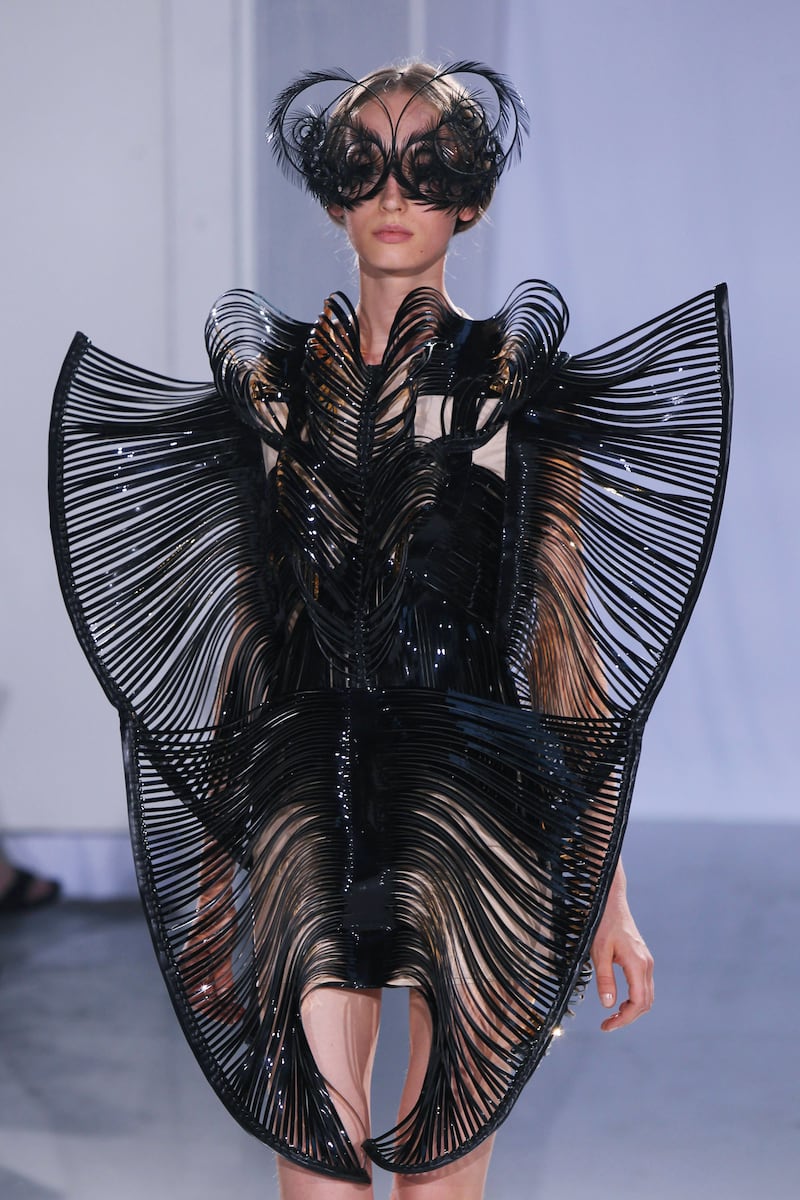
Every collection starts with experimentations with new materials and her concepts are often driven by the idea of capturing ephemera – like smoke or water, pushing boundaries. Her water dress capturing the fluidity of water and sculpted from handblown glass bubbles was made with hot air guns, a metal pliers and a large sheet of PETG (a chemical compound).
Other aspects of her life are equally fascinating. When she was 17, she made her first parachute jump in Australia and a collection called My Capriole embodied the various emotions she felt falling from the sky. The Snake Dress embodying the myth of Medusa was composed of thousands of black translucent viewgraphs cut into stripes and individually stitched on to a stretch mesh base in 3D serpent shapes.
She has collaborated with skydivers and free diving champions and combined fashion with extreme sports in two performance shows – Earthrise in 2021 (which featured the Aerology jump suit made with hand cast liquid silicone) and Carte Blanche in 2023. Other notable collaborations have been with quantum physicists, marine biologists and architects including the late Zaha Hadid.
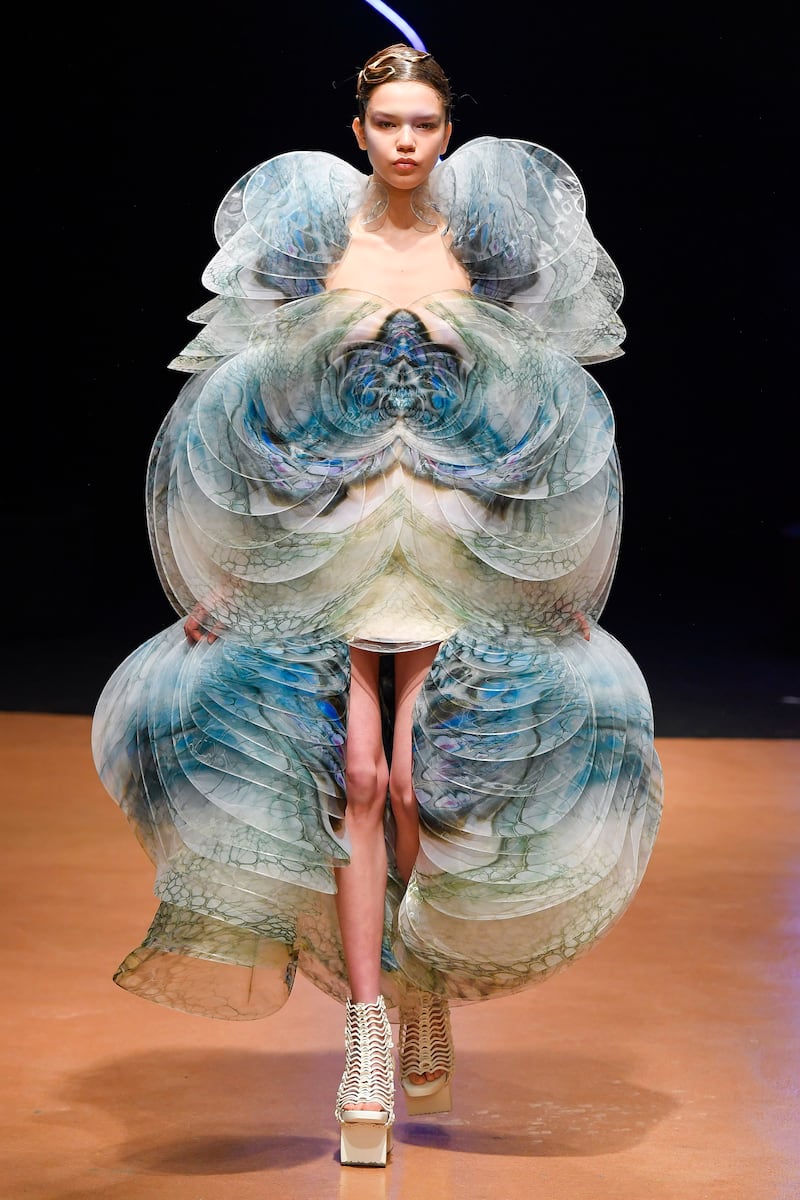
An old coffee house warehouse in Amsterdam overlooking the canal is her atelier where she continues to work and experiment with her team. A member of the Chambre Syndicale de la Haute Couture in Paris since 2012, she shows in the French capital twice a year. The issue of sustainability in fashion has led her to explore the possibilities offered by biodegradable technology which she has used to create several outfits. One called Meta Morphism 2021 was made from recycled organza and cacao transformed into biopolymer filaments; another, the Genesis dress, was made with sustainable off-white banana leaf fabric and satin draped to fall from a transparent corset.
The visual power of her creations on the catwalk cannot be overstated and the sheer beauty of these otherworldly pieces defy description. The ethereal Magnetosphere dress in multilayered laser cut silk lace and upcycled plastics is just one example. Others include the Hydozoa dress, oil painted with 3D layered transparent laser cut PETG leaves; the Mano Maya dress with its spidery, gradient dyed web-like lace; and the daring Oceanix dress made with laser cut black microfibre layered and intersected with various lightweight textiles creating an extraordinary silhouette.
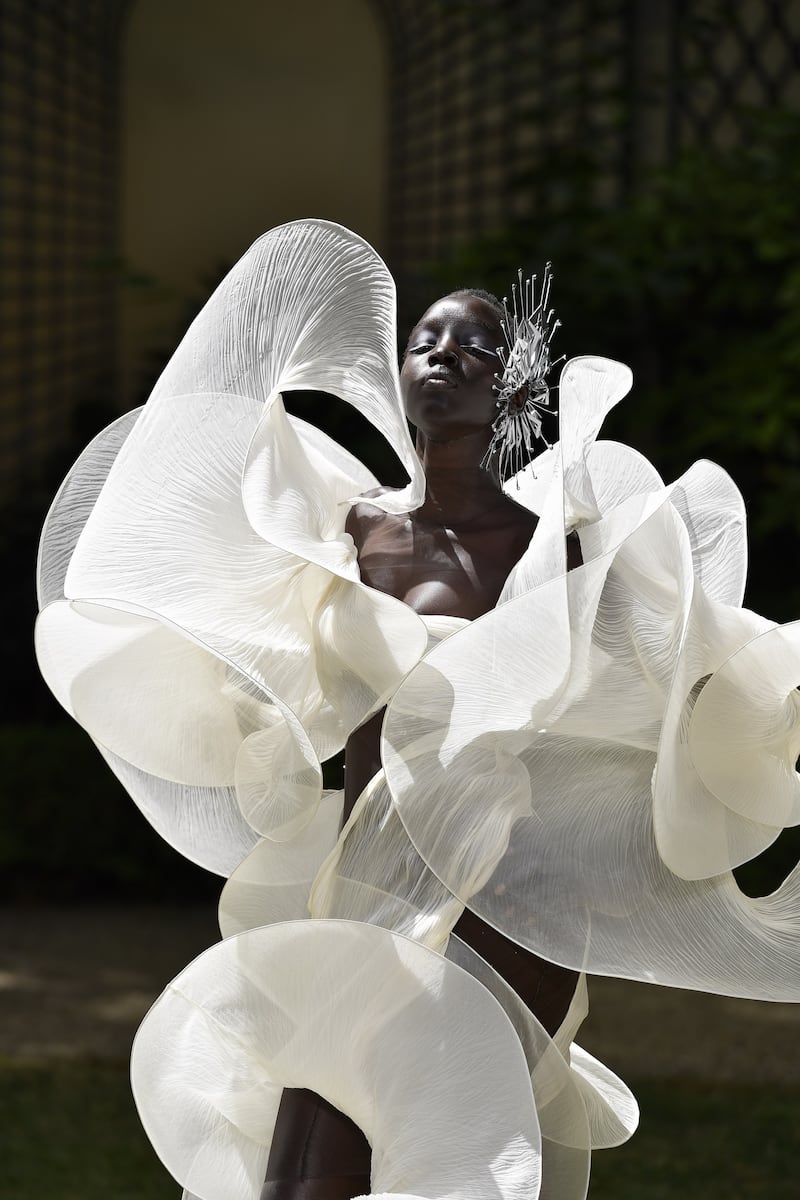
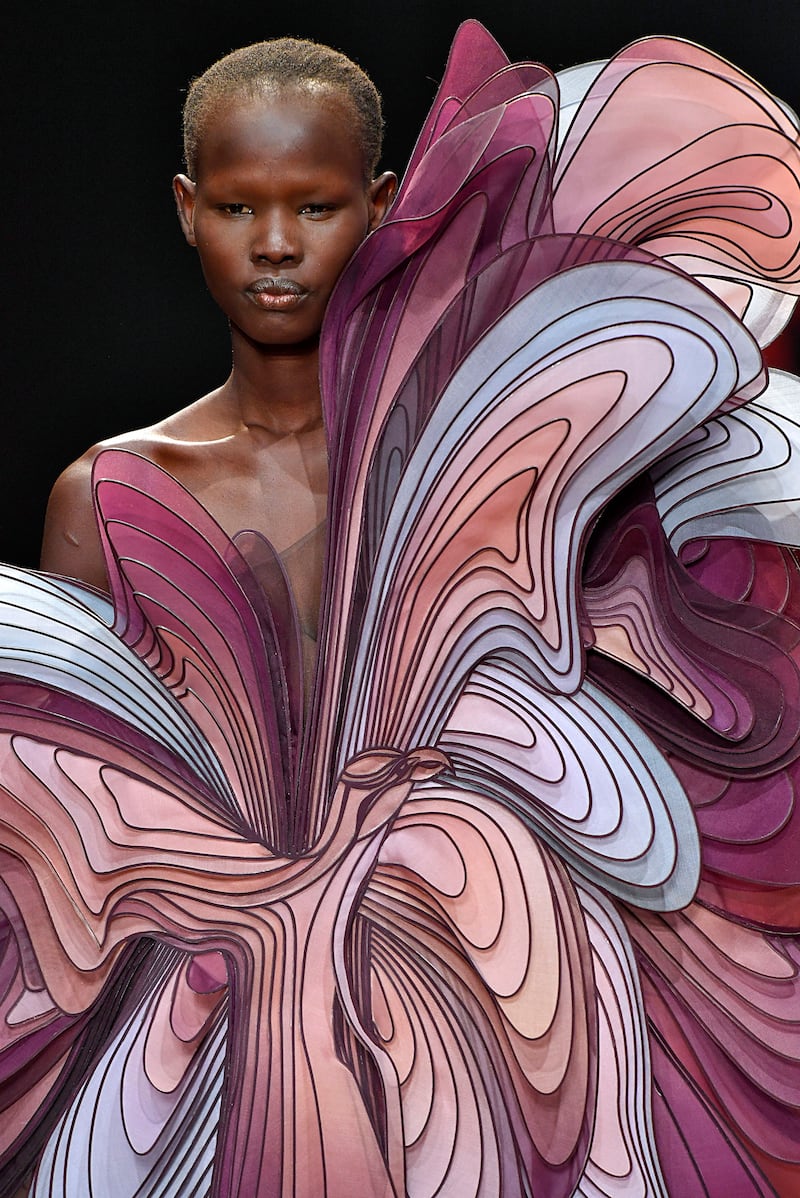
Van Herpen is consistently innovative, combining technology with outstanding craftsmanship in ways like no other. She has been experimenting with AI but told Australian Vogue that she “is a little bored with it to be honest, creatively it’s not interesting, it’s limited”.
As one of the guest speakers in September at the Making In seminar in Riverstick, Co Cork, the annual gathering of makers hosted by Joseph Walsh Studio, she will discuss her work which was recently celebrated in the retrospective exhibition at the Musee des Arts Decoratifs in Paris. It was one of the most successful in the museum’s history with more than 350,000 visitors and is at the Queensland Gallery of Modern Art in Brisbane until October 7th.
Making In runs from September 6th to 8th at Fartha, Riverstick, Co Cork. This year’s theme will consider aspects of making across craft, art, design, architecture, fashion gastronomy and performance. www.makingin.org/events. Tickets from Eventbrite.ie



